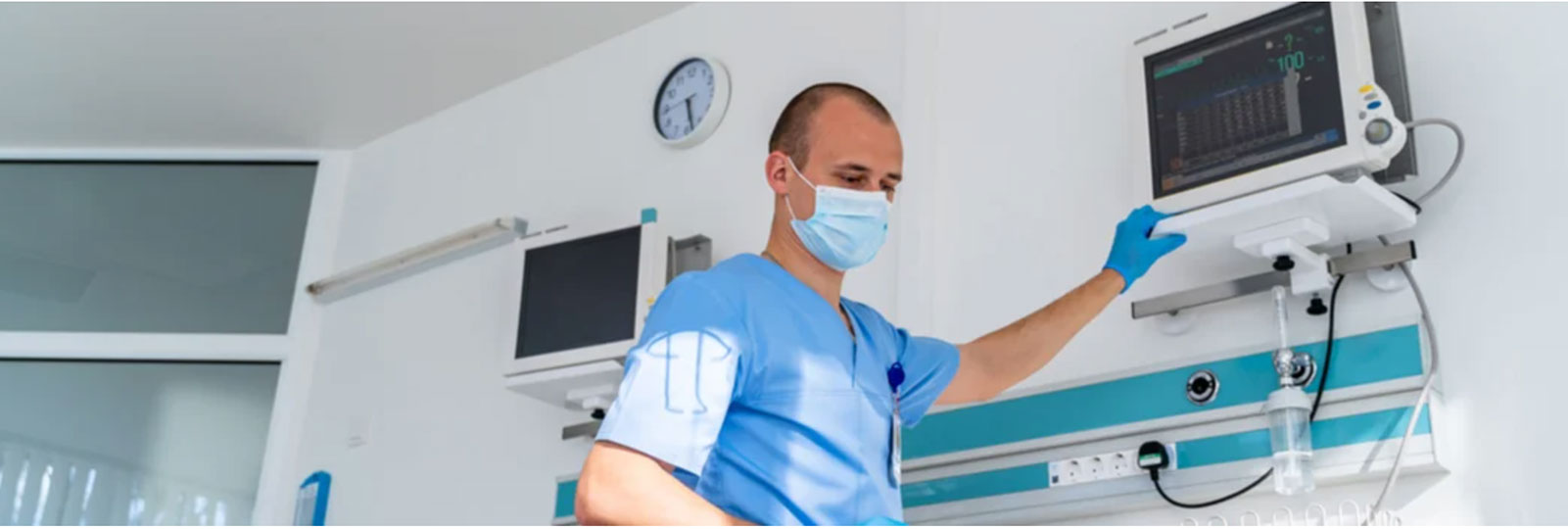
Cleanliness and good hygiene are important in any public place, but in hospitals, it is even more critical as the spread of infection can threaten patients who are already at risk.
Pathogens such as MRSA, norovirus and C.difficile can persist in the hospital environment for days, on surfaces, equipment, and in the air. It is therefore crucial that hospitals have appropriate infection prevention and control (IPC) practices in place to prevent the risk of hospital patients acquiring these infections. Ensuring high standards of cleaning is a vital part of this – it’s a major contributor to controlling the spread of infections.
In this blog post, we dig deeper into the crucial role that hospital cleaners play in infection prevention and control.
But first, let’s take a closer look at how hospital-acquired infections (HAIs) are spread within the hospital environment.
The chain of infection
Understanding how infections are transmitted in healthcare settings is crucial for effective infection prevention and control.
The first link in the chain of infection is the infectious agent or pathogen, which can take many forms, such as viruses, bacteria, fungi and parasitic protozoan diseases (e.g. malaria).
The next link in the chain is the reservoir. This is the habitat in which the pathogen lives and multiplies. Common reservoirs include humans, animals or insects, and the environment. The environment contains many reservoirs of infection, such as soil (a common reservoir for the causative agent of tetanus) and water (a common reservoir for the causative agent of Legionnaires’ disease). This is why thorough cleaning of the hospital environment is so critical.
The portal of exit determines how the pathogen leaves the reservoir or host. This can happen either via direct transmission or indirect transmission via mechanisms such as fleas, flies, food, water, biological products or surgical instruments. Indirect transmission can also be airborne, where tiny particles of an infectious agent are carried by dust or droplets in the air and inhaled into the lungs.
Patients, staff or visitors may then acquire the infection through inhalation, absorption (e.g. through the eyes), ingestion, via the insertion of medical devices, or from touching surfaces contaminated with the pathogen. The sterilisation of medical equipment and decontamination of the hospital environment is therefore crucial for breaking the spread of infection.
The role of hospital cleaners
The important role of hospital cleaning started getting more interest in the late 1990s after a rapid increase in hospital-acquired MRSA infections in the UK. Since then, there has been a significant body of evidence proving cleaning to be a major control component for outbreaks of infection.
The National Specification for Cleanliness in the NHS provides a framework for the cleaning standards and the delivery of cleaning services. There are a total of 49 standards, covering all:
- Walls
- Flooring
- Patient equipment
- Furnishings, fixtures and fittings
- Fixed assets (e.g. plug sockets, light switches)
- Fixtures and appliances in kitchens and bathrooms
The hospital environment is routinely cleaned and disinfected according to the hospital’s cleaning policies (e.g. hourly, daily etc.) or when surfaces appear visibly dirty, and always after patient discharge. This ensures that when a new patient enters the room the risk of them acquiring an infection from the previous patient is significantly reduced. Hand-touch surfaces require particular attention as they are more likely to become heavily contaminated with pathogens.
More frequent and stringent cleaning specifications are necessary for some areas such as operating theaters and intensive care units, due to the increased risk of infection. Surgical site infections (SSIs) are one of the most common HAIs in the UK. When a person has invasive surgery, the chances of developing an SSI are around 5%.
What is ‘clean’?
All parts should be visibly clean, including the underside of items. There should be no visible soiling or staining of surfaces and no dirt or dust lurking in hidden corners.
But for the most part, contamination will be invisible. This is why it’s so important that cleaning standards are adhered to and that monitoring or auditing of cleaning is undertaken regularly by services management.
Recent innovations in hospital cleaning
Manual cleaning of the hospital environment and equipment is critical for protecting patients from HAIs, but there is still some risk that pathogens could remain on surfaces if inadequately cleaned.
Automated decontamination systems, using ultra-violet light (UV-C) or hydrogen peroxide vapour (HPV), has been found to enhance the effectiveness of cleaning. These automated systems cannot replace routine cleaning, but are being used in addition by many hospital cleaners to create an even safer patient environment.
Although hospital cleaners play a crucial role, all hospital staff are ultimately responsible for making sure that the patient environment and patient equipment are kept clean. Staff must adhere to hand hygiene practices and take care not to leave clutter around, as this can impede cleaning.
Working as a hospital cleaner requires deep concentration and superior attention to detail. It’s not an easy task and can be tiring. But the role these hidden armies play in protecting patients is of huge importance. In case we needed reminding, the recent coronavirus outbreak has shown us just how key hospital cleaners are in preventing the spread of infection and creating a safe environment for patients.





